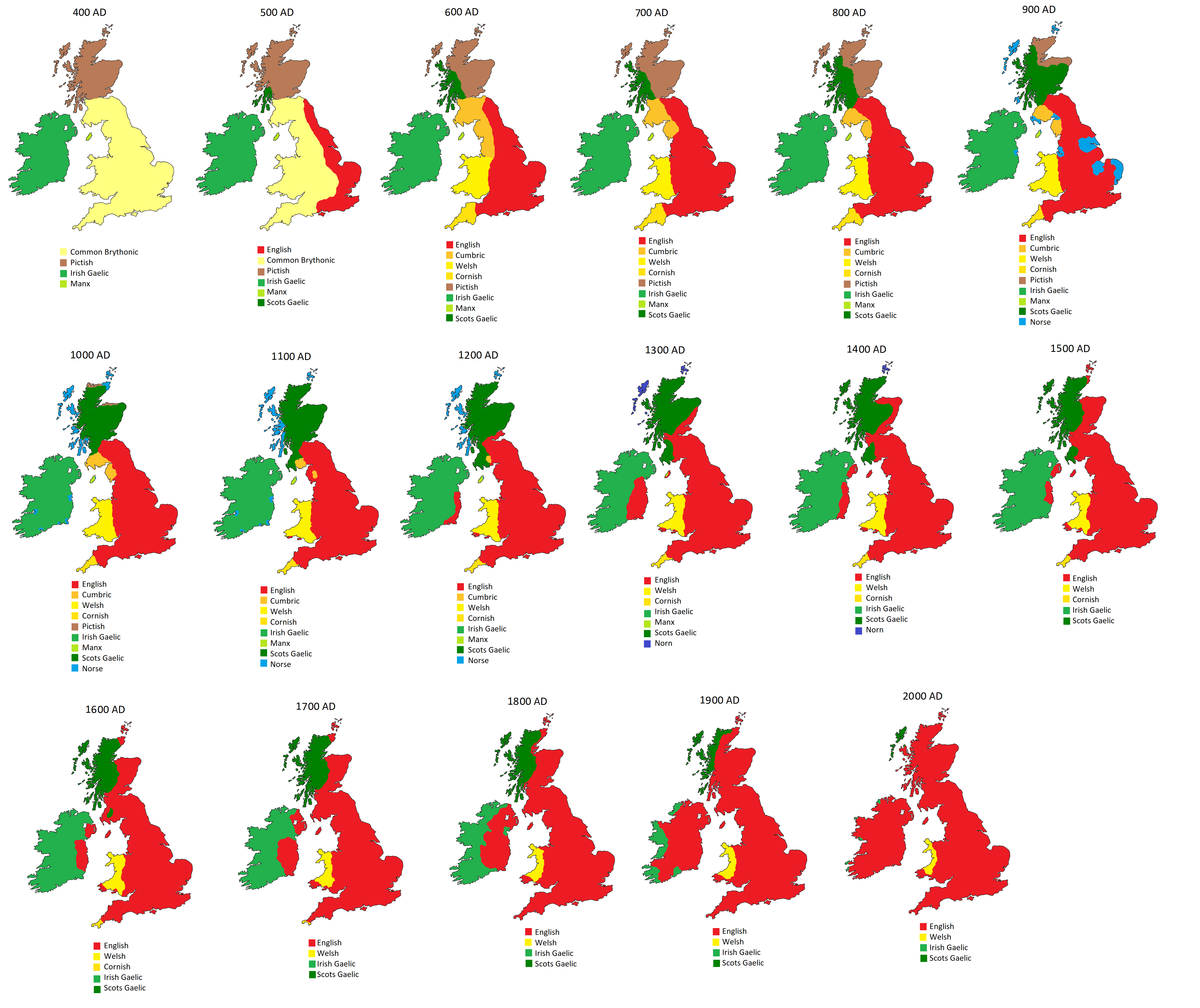Submitted by Taps Coogan on the 27th of September 2018 to The Sounding Line.
Enjoy The Sounding Line? Click here to subscribe for free.
The following graphic, from Reddit user CountZapolai, shows the predominant languages spoken throughout the British Isles since shortly before the Fall of the Roman Empire in 400 AD. While English is the predominant language of the British Isles today, the linguistic history of the Isles is quite convoluted.
Despite much of the British Isles having been under Roman control for hundreds of years, the primary languages of the Isles were still the indigenous Celtic languages at the time of the fall of the Roman Empire. Saxon and Norse invasions thereafter brought English and Norse to the Isles. While Norse failed to take hold, English has gradually displaced most of the native Celtic languages in Britain and Ireland, leaving it the dominant langauge of the UK and Ireland today. Nonetheless, hundreds of thousands of Irish, Welsh, Scottish Gaelic, and Cornish speakers remain to this day.

If you would like to be updated via email when we post a new article, please click here. It’s free and we won’t send any spam.
Would you like to be notified when we publish a new article on The Sounding Line? Click here to subscribe for free.


Would like to see this go back to the first century. Also It would be better if it distinguished between old English, middle English and modern English.
Have been reading about Iceland, as my grandfather emigrated in 1895. There are a lot of stories of ‘Vikings’ conquering parts of the British Isles, France, etc.etc. and they all seemed to be able to talk to each other. So, they were all linguists, or the languages were very similar.
Interesting that a region in Germany–a valley–was printing coins that were widely accepted as reliable, and an Icelandic lutheran pastor learned of this, and the coin was referred to as the ‘valley’. Valley, in Iceland is ‘dalur’, which went to english as dollar.